 |
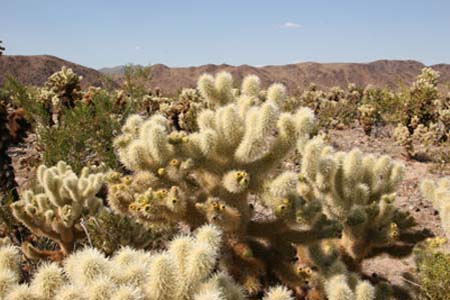 |
Photographs (left to right): Russian Thistle, Mojave Desert, California; Ridgecrest, California; Teddy Bear Cactus, Joshua Tree National Park, California
Wampum Belt Archive
Canandaigua Treaty Belt
(George Washington Covenant Belt)
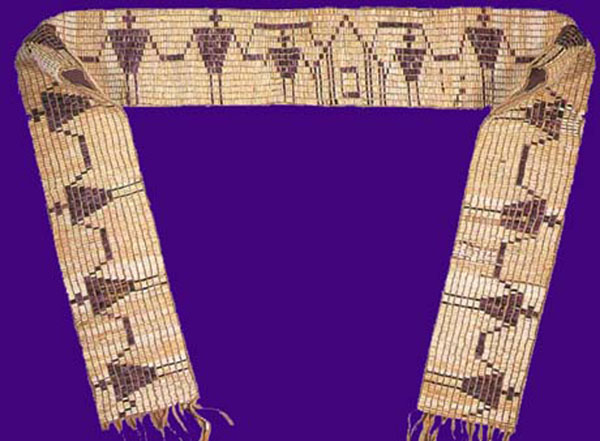
Original Belt
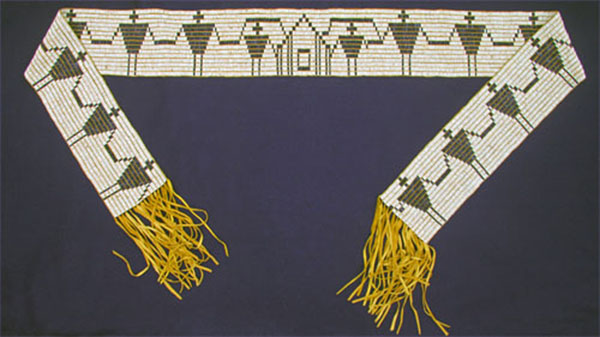
Reproduction (R. D. Hamell)
Original Size: |
Length: 72.45 inches. Width: 5.25 inches. Rows: 15. Beads: est. 10,000. |
Reproduction: |
Beaded length: 105 inches. Width: 7.0 inches. Length w/ fringe: 128.0 inches. |
Beads: |
Rows: 609 by 15 beads wide. Total beads: 9,135. |
Materials: |
Warp: leather. Weave: artificial sinew. |
Description:
The symbolic figures of 15 men with outstretched arms and clasped hands, extend along its length. In the center is a figure of a house, from the roof of which extends a protecting shelter for the man standing on either side. These two figures may be considered to be the Keepers of the East and West Doors, respectively, of the Iroquoian Long House and to be acting as guards to the open door of the effigy of the pale face house, or the National Capitol Building. The other remaining 13 figures, signifying the 13 original colonies, are joined in unity by the clasped hands. The designs are woven in the dark or purple beads on a solid white beaded field which denotes peace and friendship (Clarke, 1931).
Canandaigua Peace Treaty of 1794 (Quoted from: Bardeau, 2011)
In 1794, the United States was addressing the issues of aboriginal rights, particularly those of the Hodinöhsön:ni´. The Treaty of Paris, which ended the American Revolution, did not include Hodinöhsön:ni´ interests in its provisions. The first attempt to rectify this situation was made at Fort Stanwix in 1784. There, Hodinöhsön:ni´ war chiefs, who did not have the authority to make such decisions, ceded thousands of acres of their aboriginal territory to Pennsylvania, New York and the United States. Many Six Nations leaders were now trying to get some or all of that territory back. Fearing that the Hodinöhsön:ni´ might lend its support to the war in the northwest (Ohio) territory, George Washington sent Timothy Pickering to Canandaigua to renegotiate the agreement in an effort to satisfy Hodinöhsön:ni´ concerns, as well as to keep the peace.
George Washington belt was given by him to the Haudenosaunee delegation of sachems who met with him in Philadelphia in early 1792. It wasn't until November of 1794 the treaty was formally signed in Canandaigua (Hamell, G.R. 2014).
The Treaty of 1794 (also known as the Pickering or Canandaigua Treaty) established and recognized Hodinöhsön:ni´ title to a fraction of its ancestral homeland. More importantly, it guaranteed each Nation’s sovereignty on the land that remained. The U.S. (nor any of its individual states or land speculators) could not take these lands away unless the Nation chose to sell. In addition, the treaty provided $10,000 in goods and an annuity of $4,500 and pledged to deal with the offenders guilty of criminal acts against members of the Six Nations.
The Canandaigua Treaty’s importance to the United States and to the Hodinöhsön:ni´ cannot be overstated. Not only did it strengthen the federal position of authority over individual states when dealing with Native nations, but it also established a federal responsibility to protect Native interests and sovereignty from state and individual ambitions. Each year, the United States continues to honor this agreement with the distribution of annuity cloth. And each year, the Hodinöhsön:ni´ “brighten the chain of friendship” by commemorating the Treaty of Canandaigua on November 11 – the day and month when the treaty was first signed. For more information see Jemison and Schein (2000).
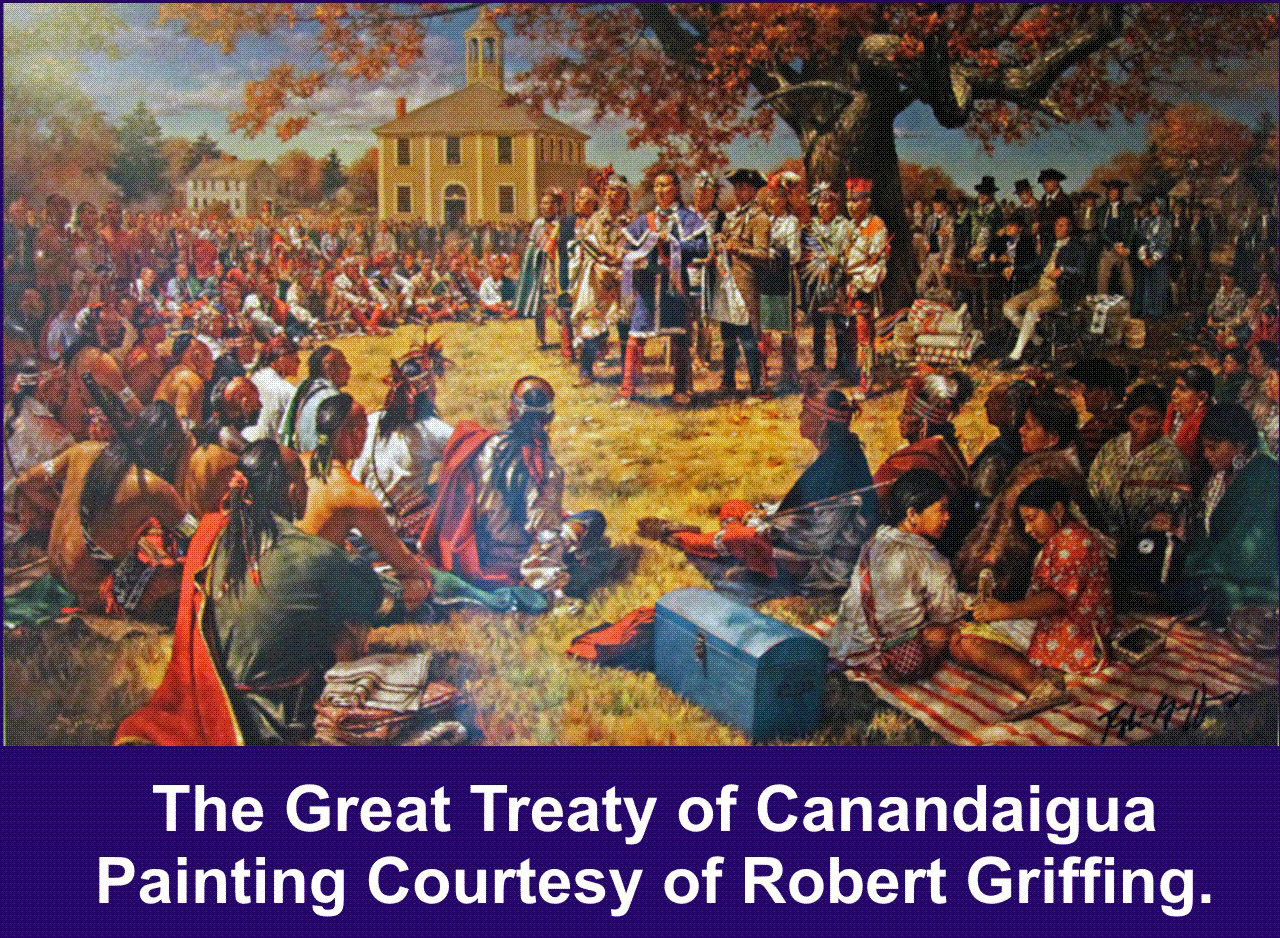 |
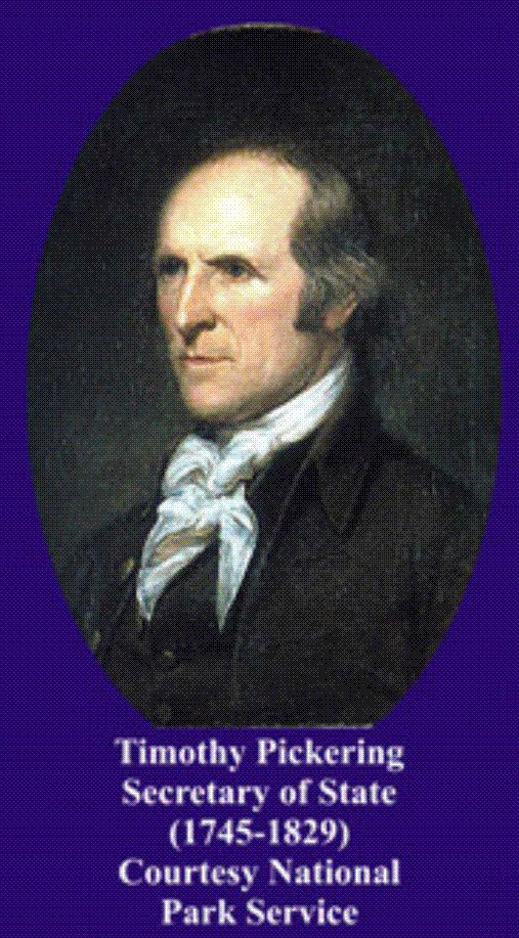 |
Randy John (2014) provided the following transactions which took place in 1792:
April 23, 1792 (IV) Presidential ratification on agreement with the Five Nations. National Archives and Records Service, Washington, D.C., Diplomatic Branch, Indian Treaties.
April 23, 1792 (III) Presidential ratification agreement with the Five Nations. National Archives and Records Service, Washington, D.C., Diplomatic Branch, Indian Treaties.
April 23, 1792 (II) Article of stipulation of $1,500 annuity to the Five Nations signed by George Washington and Henry Knox. Huntington Library, San Marino, Calif., HM 576.
Stolle, Nickolaus (2016): Backed with linen in 1956. Bequest of Emma T. Thacher 1927, purchased by her husband John B. Thacher in 1893, acquired by Henry Carrington from Thomas Webster, an Onondaga in 1891. Repatriated 1988.
Reference:
Bardeau, Phyllis Eileen Wms. 2011. Definitive Seneca: It's In The Word. Jaré Cardinal, editor. Seneca-Iroquois Museum Publisher, Salamanca, New York, 443pp.
Clarke, Noah T. 1931 New York State Museum Bulletin No. 288.
Hamell, G. R. 2014. Personal Communications.
Jemison, G. Peter and Anna M. Schein. 2000. Treaty of Canandaigua 1794: Two Hundreds Years of Treaty Relations Between the Iroquois Confederacy and the United States. Clear Light Publ., 335pp.
John, Randy A. 2014. Personal Communications.
Stolle, Nickolaus. 2016. Talking Beads: The history of wampum as a value and knowledge bearer, from its very first beginnings until today. Hamburg, Germany. ISSN 1437-7837
 |
 |
 |
 |
 |
 |
 |
 |
|---|